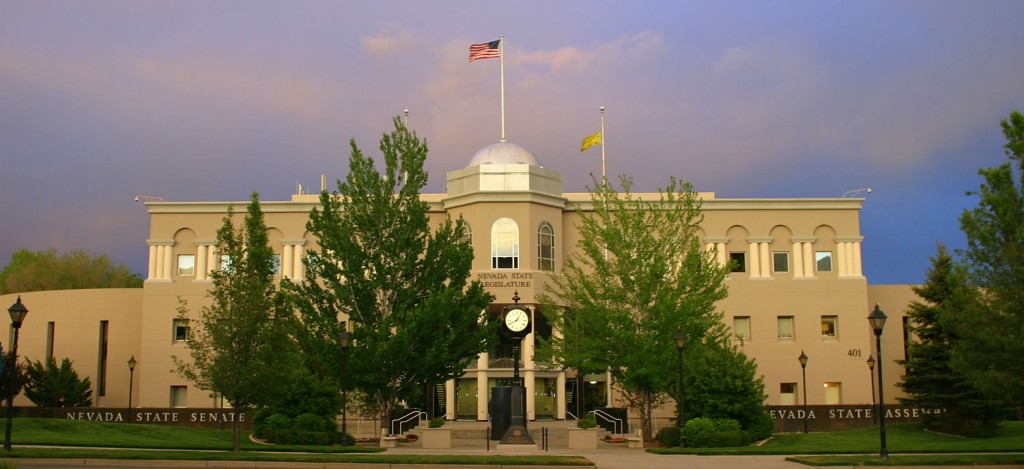
Nevada’s brand-new (near) universal school-choice program
by Stanley Carlson-Thies
On June 2, 2015, Nevada Governor Brian Sandoval signed into law a comprehensive voucher-like Educational Savings Account (ESA) system for public school students. Parents of such a student can establish an education fund into which that student’s share of state funding will flow, and the money can then be used to pay for private school, textbooks and tutoring, and other expenses of educating the student outside of the public or charter schools. ESAs, like vouchers, are a method for government funding of schools that respects parents’ religious choices and preserves the religious character and practices of schools.
In conventional public school financing, government funds go directly to public schools, and parents who choose a private school may receive little or none of those education funds to help pay for their student’s schooling. In a voucher system, the government funds pay for vouchers or scholarships that the parents can redeem to pay for public school, charter school, or private school. With ESA, the student’s share of the public education funds can be used in even more diverse ways: to pay for online learning, for tutoring to supplement schooling, schooling at a combination of schools, etc.
Funding via vouchers or ESAs is, importantly, “indirect”—rather than the government deciding to send the money to some religious private school, that school only receives government funds when parents choose the school. Because the money arrives because of their choice, not the government’s decision, the school, despite being government-funded, can incorporate religion into its teaching and other activities without violating the no-establishment requirement of the Constitution. So voucher or ESA funding is a way for the government to support not only the schooling choice of parents who approve of public (secular) schooling but also the choices of parents who desire faith-shaped schooling for their children. By contrast, when the government directly funds and runs schools, or contracts with private schools to provide education, the education has to be religion-free. That’s why public schools and charter schools can only teach about religion, not educate from a religious perspective.
Several other states have adopted ESA programs—Arizona, Florida, Mississippi, and Tennessee. Various states or parts of states have voucher systems and some states have education tax credits that support private and religious schools.
To gain legislative and public support from lawmakers and citizens who have a deep commitment to the ideal of a common school, these various funding alternatives typically are restricted, applying only to parents of students in persistently failing public schools, or only to parents with low incomes, or the like. The Nevada ESA is unusual in applying broadly to public school students.
But it isn’t universal. Most important, only students who have attended a public school for at least 100 school days are eligible for the ESA funding, not students whose parents are homeschooling their children or who started them out in a private school. Once a student is eligible for an ESA account, then the parents can use the funds to educate the student in part at home and in part at a private or charter school, or fully at a private school, or in some combination. But the starting point is attendance in a public school.
Whatever the political logic of this requirement, it seems to be both unfair to parents who have directly chosen to home school or to send their children to a private school and very disruptive to Nevada schools: parents seeking ESA support for their children will first enroll them in the local public school and then, after 100 days, transfer them to a private school—causing disruption both to the public school and the private school—or to homeschooling, causing disruption to the public school.
A positive note in the Nevada law: it specifically provides that a private school that receives any of the ESA funding does not thereby lose any of its independence nor become in any way a “state actor” that must thereafter follow the secular rules that the government must follow.
The common school ideal is deeply embedded in the American soul. And yet our diverse population of families in truth adheres to many different ideas of schooling, different conceptions of how religion and schooling should be interrelated; different views of how best to educate; different views of how parents, schools, and students should work together; different views of classroom discipline and even of the goals of schooling. Vouchers and ESA programs are important ways to direct government education funding to the schooling choices of the families.
Further reading:
Matthew Ladner, The Way of the Future: Education Savings Accounts for Every American Family (Friedman Foundation for Educational Choice, October 2012).
Council for American Private Education, CAPE issue paper, “Principles Relating to School Choice Legislation”
Charles Glenn, The Myth of the Common School (Institute for Contemporary Studies Press, 2002).
Charles Glenn, Contrasting Models of State and School: A Comparative Historical Study of Parental Choice and State Control (Bloomsbury Academic, 2011).
Charles Glenn with Jan De Groof, Balancing Freedom, Autonomy, and Accountability in Education, 4 vols. (Wolf Legal Publishers, 2012).
